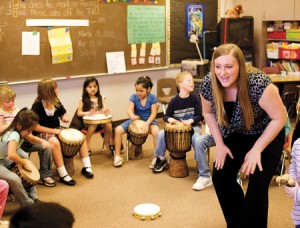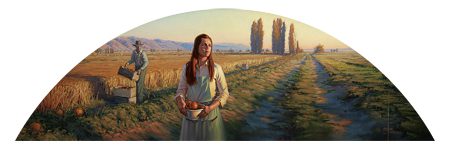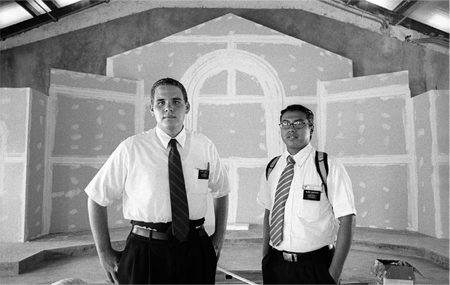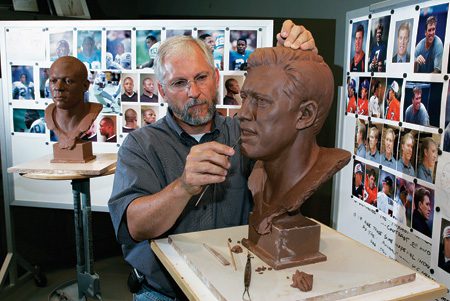Aided by $6 million in gifts, BYU students and educators work to improve art education in elementary schools.
When Ashley Hansen Leonard (’09) teaches, her students spin. Twenty-five excited second-graders look on as she begins the day’s lesson on interpretive dance in a Midas Creek Elementary classroom in Riverton, Utah. Propping up an abstract painting, she asks, “What do you see in this picture?” The kids shoot back responses:
“I see squiggly lines.”
“I see zigzags.”
“It looks like an explosion!”
“Lots of blue.”
Leonard thumps out a rhythm on a small drum, and the whole bunch erupts in exuberant squiggling, zigzagging, and exploding. “Try to dance how blue makes you feel,” she instructs.
Fine arts BYU students like Leonard, a dance major, share their arts expertise and enthusiasm in elementary classrooms as part of the the Beverley Taylor Sorenson Arts Reaching and Teaching in Schools (ARTS) Partnership, founded at BYU in 2005. Bolstered by a gift last year of $1.5 million and another this June of $4.5 million—both donated by its namesake and her family—the partnership enables BYU students to spend 50 hours a semester teaching kids in Utah schools dance, music, storytelling, theater, or visual arts.
The partnership supports professional-development programs as well, such as the Arts Academy seminar for elementary teachers and principals, in which faculty from the partnership’s three collaborating colleges—the McKay School of Education, the College of Fine Arts and Communications, and the College of Health and Human Performance—share tips for incorporating the arts into curricula.
“It really made my job seem brand new,” says Stephanie Wood (BS ’92), an Arts Academy participant and a third-grade teacher. At Arts Academy, Wood learned new ways to use the arts to teach math, science, and language. She has since shared this knowledge with her colleagues at faculty meetings, extending the partnership’s reach.
So far, some 40,000 students and educators in five Utah school districts—Alpine, Jordan, Nebo, Provo, and Wasatch—have been affected by the partnership. Thanks to the recent boost in the endowment, that number promises to multiply quickly—news welcomed by Sorenson ARTS Partnership director Cally Flox and research director Debora T. Escalante (MA ’76).
“The majority of students in our local schools receive less than seven minutes of arts instruction each day,” says Escalante, adding that educators too often write off the arts as fluff. The proven benefits of effective arts education, says Flox, are manifold: student motivation and attendance increase, critical thinking and creativity develop, and reading and math scores improve.
Just ask teacher Roxanne L. Bailey (BS ’76). She and student teacher Holly Taylor (BA ’08) devised a dance and poetry project to bring the Civil War to life for Bailey’s fifth-graders. When the project ended and Bailey announced the next topic, students protested: “They said, ‘No! We want to keep doing Civil War!’ I’ve never had that response,” she says. “They were, I think, moved. More than ever before.”











